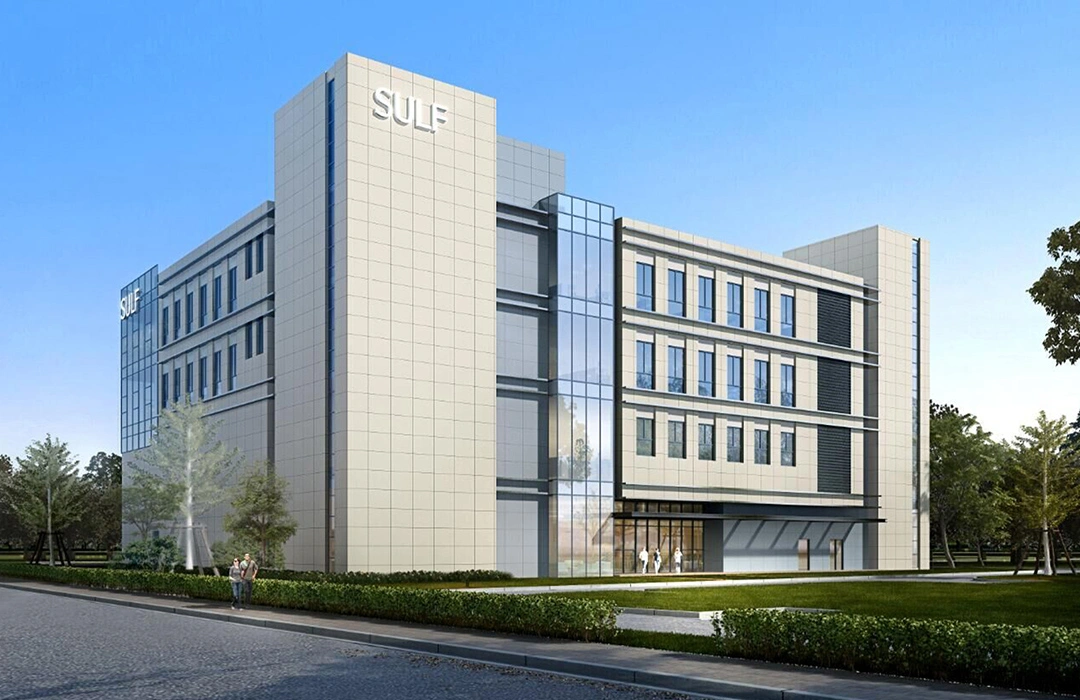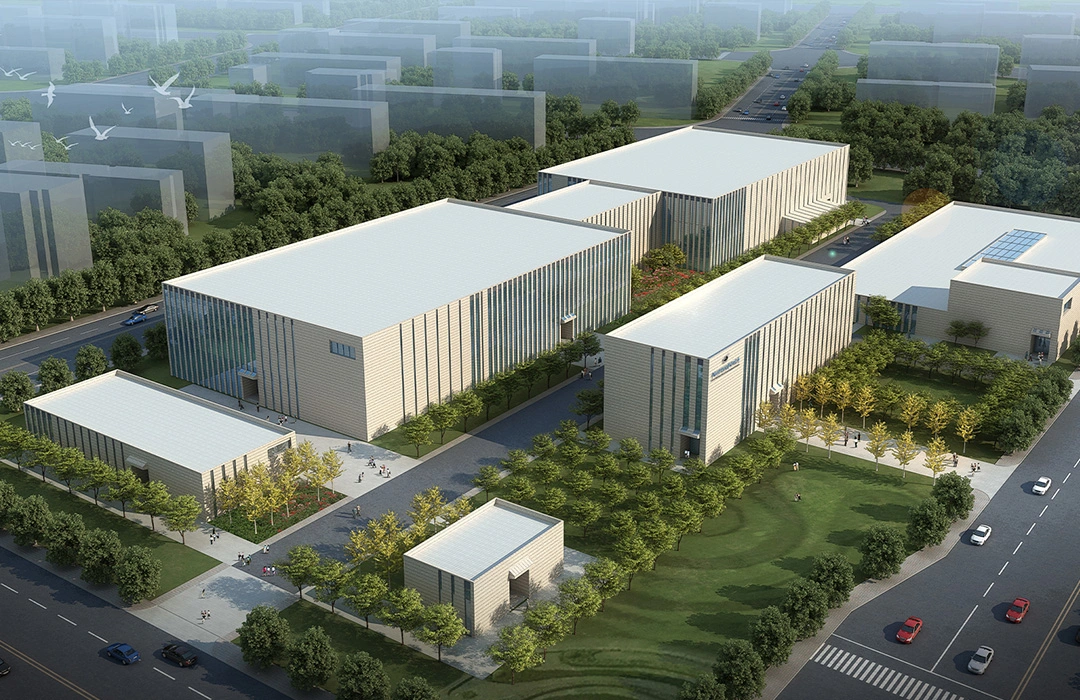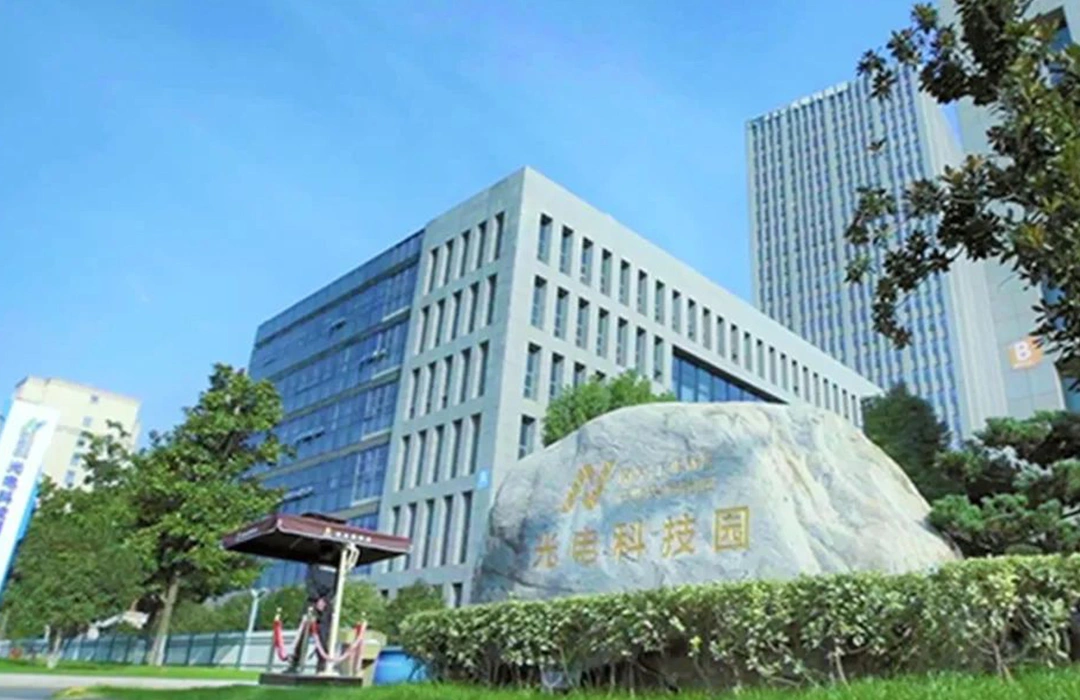Constant temperature and humidity clean laboratory | Nanjing Expansion Technology builds the cornerstone of precise scientific research and production
Release time:
2025-07-07 14:27
I. Case Study of Constant Temperature and Humidity Clean Laboratory Construction
Nanjing Expand Technology Co., Ltd. was founded in 1999 and is a national high-tech enterprise. It focuses on innovative practices in laboratory construction and intelligent technology. Integrating cutting-edge technologies such as artificial intelligence and the Internet of Things, it provides an integrated solution for the entire life cycle of "planning-design-construction-operation and maintenance", creating intelligent, digital, and green laboratory spaces. In 2022, it was recognized by the Jiangsu Provincial Department of Science and Technology as the Jiangsu Provincial Engineering Technology Research Center for Precision and Intelligent Experimental Environment System 。
To date, Nanjing Expand Technology has served over 2000 customers , and completed over 3000 laboratory projects , including over 100 national key laboratories . Covering a large number of constant temperature and humidity laboratories
Shanghai Super Strong Ultrashort Laser Experimental Device ( SULF)
High-space, high-precision constant temperature and humidity clean control
The constant temperature and humidity clean system of the super strong ultrashort laser experimental device built by our company has achieved large-area, high-space (single laboratory area over 1000 square meters, net height 7.5 meters) environment, while controlling the fluctuation and uniformity of temperature, reaching a single-point temperature fluctuation of ±0.1℃/24h or less, and temperature monitoring point uniformity of ±0.2℃/24h or less, and humidity fluctuation of ±1%RH/24h. With our company's strong technical support and professional application capabilities, this project won the "Magnolia Award", the highest honor in Shanghai construction engineering.

PAPS Advanced Light Source Technology R&D and Testing Platform
Our company completed the first domestic double-layer openable ceiling ultra-high precision constant temperature experimental environment, and ensured that its temperature stability remains at ±0.1℃, large-space ultra-high precision constant temperature experimental environment (laboratory net height 4.5m, single room area 450㎡, temperature stability ±0.1℃) and optical surface laboratory (temperature fluctuation ±0.05℃, uniformity ±0.1℃), providing important infrastructure support for the world-class light source project - High Energy Synchrotron Radiation Light Source.

Nanjing Advanced Optoelectronic Integration Technology Research Institute
Nationally leading light chip R&D platform
Nanjing Advanced Optoelectronic Integration Technology Research Institute is a Nanjing University "Double First-Class" construction school-local integration first batch of signed projects, Nanjing City to create a "city of innovation with global influence" key construction of new R&D institutions. Nanjing Advanced Optoelectronic Integration Technology Research Institute Nan Zhi Optoelectronics Public Technology Platform is an advanced and open micro-nano technology R&D support platform, integrating micro/nano processing, manufacturing and testing methods.

II Core Value of Constant Temperature and Humidity Clean Laboratory
(1) Ultimate Control of Environmental Parameters
- Temperature Control Constant temperature and humidity clean laboratories can control temperature accuracy within a very narrow range, usually achieving ±0.002℃ - ±2℃ accuracy range. For example, in high-precision chip manufacturing experiments, even minor temperature fluctuations can cause changes in the performance of electronic components inside the chip, affecting the quality and performance of the chip. In some high-end metrology and calibration laboratories, precise temperature control is crucial for ensuring the accuracy of instrument calibration.
- Humidity Control In terms of humidity, the fluctuation range can be maintained between ±1.5% - ±5% . In textile industry fiber strength testing experiments, changes in environmental humidity significantly affect the water content of fibers, thereby changing the physical properties of fibers and causing deviations in test results. For pharmaceutical R&D laboratories, a suitable and stable humidity environment is crucial for the stability research of pharmaceuticals, and excessively high or low humidity can cause deterioration of pharmaceuticals, affecting the R&D process.
- Cleanliness Assurance According to different experimental needs, the cleanliness of the laboratory can be switched between ISO 1 to ISO 9 grade gradient standards. In the semiconductor manufacturing field, even extremely small dust particles can cause serious problems such as short circuits in chips, so ISO 1 grade or 2 grade is required for such a near-perfect clean environment. In general biopharmaceutical laboratories, ISO 7 grade or 8 grade cleanliness can meet the requirements of most experimental operations and effectively prevent microbial contamination of pharmaceuticals.
(2) Comprehensive Pollutant Control System
- Particle Control The air filtration system equipped in the laboratory can efficiently filter 0.1 - 5μm suspended particles to ensure the cleanliness of the indoor air. For example, in electronic device manufacturing experiments, these tiny suspended particles, if they fall on electronic components, may cause short circuits, open circuits and other failures, seriously affecting product quality.
- Biological Control By strictly controlling indoor environmental parameters and using professional air purification and disinfection equipment, the growth of microorganisms and bacteria can be effectively inhibited. In cell culture experiments, once microorganisms contaminate the cell culture medium, the entire experiment will fail, so biological control is crucial to ensuring the success of cell culture and other experiments.
- Chemical Control Specialized air purification devices can remove VOC (volatile organic compounds) and other harmful gases. In chemical analysis laboratories, these harmful gases may interfere with the accuracy of experimental results and also harm the health of laboratory personnel.
- Physical Control By taking grounding measures and installing electromagnetic shielding equipment, static electricity and electromagnetic interference can be eliminated. In precision instrument testing laboratories, static electricity may adsorb dust particles, affecting the performance of the instrument's optical and electronic components, while electromagnetic interference may cause deviations in the instrument's measurement data.
Three Key Points of Professional Laboratory Construction
(1) Early Planning: Laying the Foundation for Success
- Site Assessment Factors
- Building Load-bearing Capacity Because temperature and humidity controlled clean laboratories usually contain many large and heavy pieces of equipment, such as precision air conditioning units and air purification equipment, the building's load-bearing capacity must meet the equipment load requirements. It is generally recommended that ≥500kg/m² . Taking the temperature and humidity controlled clean laboratory of a large chip manufacturing enterprise as an example, its internal equipment is dense, and the requirements for building load-bearing capacity are extremely high. After strict structural reinforcement and design, it is ensured that the building can safely bear the equipment operation.
- Environmental Interference To reduce the impact of external factors on the experimental environment, the laboratory should be away from vibration sources (distance > 50m ) and electromagnetic fields (field strength < 1V/m ). For example, in a geological exploration instrument calibration laboratory, nearby traffic vibrations or strong electromagnetic fields may interfere with the precise calibration of the instrument, so these factors must be fully considered when selecting a location.
- Infrastructure Conditions Laboratory Ceiling Height ≥3m , to provide sufficient space for equipment installation, pipeline laying, and air circulation. At the same time, reserve equipment passages ( ≥1.2m ), to facilitate equipment handling and later maintenance. In the construction of a research laboratory at a certain university, due to insufficient early planning of ceiling height and equipment passages, equipment installation was difficult, and later maintenance was extremely inconvenient, seriously affecting the efficiency of laboratory use.
- Functional Zoning Design
- Core Experimental Area As the key area for experimental operations, it usually requires a cleanliness standard of 10,000 - levels. For example, in the aseptic preparation production experiment of biopharmaceuticals, the core experimental area needs to maintain a cleanliness level of 100 to ensure the sterility and quality stability of the drugs.
- Buffer Transition Area The buffer transition area with a cleanliness standard of 1,000 levels can effectively reduce the intrusion of external pollutants into the core experimental area. When experimental personnel or items enter the core experimental area from the ordinary area, they first pass through the buffer transition area for preliminary purification and buffering to reduce the risk of pollution.
- Auxiliary Equipment Area An independent air conditioning equipment room design can effectively isolate the noise, vibration, and heat generated by the air conditioning equipment from the experimental area, while also facilitating centralized maintenance and management of the equipment. In some large comprehensive laboratories, the auxiliary equipment area also includes electrical equipment rooms, water treatment equipment rooms, etc., providing comprehensive support for the normal operation of the entire laboratory.
(2) Technology System Selection: Technology Drives Precision
- Precision Air Conditioning System
- Dual Cold Source Design Using a dual cold source design, such as a combination of a chiller and a direct expansion refrigeration system, can ensure that the system can still operate normally when some equipment malfunctions, greatly improving the redundancy and reliability of the system. In some laboratories with extremely high requirements for experimental continuity, even if one cold source equipment malfunctions, the other cold source equipment can quickly take over the refrigeration task to ensure that the experimental environment is not affected.
- Variable Frequency Control Through variable frequency technology, the compressor speed is automatically adjusted according to the actual heat load demand of the laboratory, achieving precise matching of the refrigeration capacity, with significant energy-saving effects, usually saving 30% or more. In a certain electronic component aging test laboratory, as the test equipment is turned on and off, the heat load of the laboratory constantly changes. The variable frequency controlled precision air conditioning system can adjust the refrigeration capacity in time, ensuring the stability of the experimental environment while greatly reducing energy consumption.
- Three-Stage Filtration Primary efficiency G4 ,Medium efficiency F8 and high efficiency H13 three-stage filtration system can effectively filter dust particles, microorganisms, and other pollutants in the air, ensuring that the air sent into the laboratory reaches an extremely high cleanliness standard. In medical and pharmaceutical laboratories, this strict air filtration system can effectively prevent drugs from being contaminated and ensure the quality and safety of drugs.
- Intelligent Control System
- PLC + DDC Dual Control Architecture Using a combination of programmable logic controller ( PLC ) and direct digital controller ( DDC ) dual control architecture to achieve precise control and real-time monitoring of laboratory environmental parameters. PLC Responsible for monitoring the system's logical control and equipment operating status, DDC focuses on the precise adjustment of parameters such as temperature and humidity. In a large-scale constant temperature and humidity clean laboratory of a scientific research institution, PLC + DDC through a dual-control architecture, laboratory personnel can view various environmental parameters of the laboratory in real time at the remote monitoring center and remotely control them according to experimental needs.
- Precision Grading According to the requirements of different experiments on environmental precision, the intelligent control system can be divided into conventional level ( ±1℃/±5% RH ) and high precision ( ±0.1℃/±1.5% RH ) two levels. In conventional material performance testing experiments, conventional precision can meet the needs; while in some high-end biological experiments and precision instrument calibration experiments, high-precision control is required to ensure the accuracy and reliability of the experimental results.
(3) Engineering Construction and Implementation: Quality Originates from Details
- Enclosure Structure Standards
- Walls Using 50mm rock wool color-coated steel plate, which has good fire performance (fire protection A level), and also has certain heat preservation and insulation performance, which can effectively reduce the heat exchange between the laboratory and the external environment. In the constant temperature and humidity laboratory of a certain chemical enterprise, the rock wool color-coated steel plate wall not only guarantees the fire safety of the laboratory, but also reduces the energy consumption of the air conditioning system to a certain extent.
- Ground Laying 2mm epoxy self-leveling floor, with anti-static performance (anti-static ≤1×10^6Ω ), and the surface is flat and smooth, easy to clean. In the electronic equipment manufacturing laboratory, the anti-static floor can effectively prevent static electricity from damaging electronic components, and it is also convenient for daily cleaning and maintenance to maintain the cleanliness of the laboratory.
- Ceiling Using microporous aluminum plate ceiling, porosity 30% , which can ensure uniform air distribution and has good decorative effect. In some laboratories with extremely high requirements for indoor air quality, the microporous aluminum plate ceiling can make the purified air evenly diffuse to every corner of the laboratory, ensuring uniform temperature and humidity distribution.
- Key Parameter Control
- Temperature Real-time monitoring of laboratory temperature, the control range is usually set at 20 - 25℃±0.5℃ . By installing high-precision temperature sensors, the temperature data is fed back to the intelligent control system in real time. The system automatically adjusts the heating or cooling function of the air conditioning system according to the set value to ensure that the temperature remains stable within the set range. In a certain optical instrument manufacturing laboratory, even small changes in temperature can affect the manufacturing precision of optical lenses, so strict temperature control is crucial.
- Humidity Every 5 minute records the laboratory humidity data once, the control range is 45 - 65%±2% . Through the collaborative work of humidification equipment and dehumidification equipment, and the real-time monitoring of humidity sensors, the intelligent control system can accurately adjust the indoor humidity. In a certain paper testing laboratory, humidity has a great influence on the physical properties of paper, and a suitable and stable humidity environment can ensure the accuracy of the test results.
- Pressure Difference Using a pressure difference sensing monitoring system to ensure that the laboratory and the outside world and different functional areas maintain + 10 - +15Pa pressure difference. The positive pressure environment can prevent external pollutants from entering the laboratory, and the pressure difference setting between different areas can effectively control the airflow direction and avoid cross-contamination. In biosafety laboratories, strict pressure difference control is one of the important measures to ensure experimental safety.
- Noise Using 8 hourly equivalent measurement method to ensure that the laboratory noise ≤55dB (A) . By selecting low-noise equipment, reasonably arranging equipment layout, and adopting sound insulation and noise reduction measures, such as installing soundproof doors and windows and using sound-absorbing materials, a quiet and comfortable experimental environment is created for experimental personnel. In some experiments that are sensitive to sound, such as acoustic testing experiments, a low-noise environment is a necessary condition to ensure the accuracy of the experimental results.
As a key infrastructure for modern scientific research and production, the construction of constant temperature and humidity clean laboratories involves many professional fields and complex technical links. From the initial planning and design, to the selection of technical systems and engineering construction and implementation, to strict engineering quality management and acceptance testing, every link plays a crucial role in the final performance and use effect of the laboratory. Only through careful planning, professional technical support, and strict quality control can high-quality constant temperature and humidity clean laboratories that meet the needs of various industries be created, providing a solid guarantee for scientific and technological innovation and industrial development.
Related News



